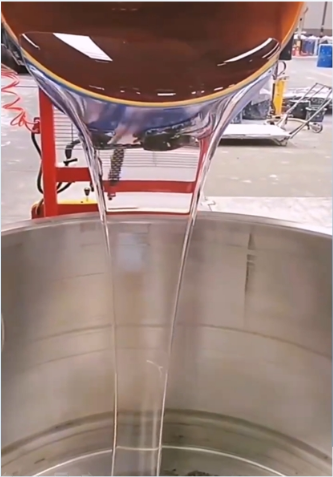The main component of transparent thermal insulation coating is indium tin oxide, which is an environmentally friendly water-based coating. It not only has good transparency, but also effectively isolates solar thermal radiation. With a thickness of only a few microns, the indoor and outdoor temperature difference can reach about 6 degrees Celsius, the infrared shielding rate reaches 70%, the visible light transmittance rate reaches 80%, and the ultraviolet blocking rate reaches 99%. Even without air conditioning, it can achieve the effect of “warm in winter and cool in summer”. At the same time, it also has excellent aging resistance, stain resistance, self-cleaning, anti-static, anti glare, anti radiation and other functions.

- Working principle
Transparent insulation coatings mainly achieve insulation effects through the following methods:
Reflective infrared: Nanomaterials in coatings can reflect infrared rays from sunlight, reducing heat transfer.
Blocking UV rays: Some coatings can effectively block UV rays and prevent indoor items from aging.
Low thermal conductivity: The composition of the coating has low thermal conductivity, reducing heat transfer through the coating. - Main components
Nano metal oxides, such as indium tin oxide (ITO), zinc oxide (ZnO), etc., are used to reflect infrared radiation.
Resin substrate: such as acrylic resin, polyurethane resin, etc., providing adhesion and transparency of coatings.
Solvent: Used to adjust the viscosity and application performance of coatings.
Additives: such as UV absorbers, stabilizers, etc., enhance the durability and functionality of coatings. - Advantages
High transparency: does not affect the transparency of glass or substrate.
Good insulation effect: effectively reduces indoor temperature and reduces air conditioning energy consumption.
UV protection: Protect indoor items from UV damage.
Environmental protection and energy conservation: reduce energy consumption and comply with green building standards.
Convenient construction: can be directly sprayed or painted on substrates such as glass and walls. - Application Fields
Architectural glass: Glass used in office buildings, residential buildings, greenhouses, and other buildings to reduce indoor temperature.
Automotive glass: reduces interior heat and improves driving comfort.
Industrial equipment: used for equipment surfaces that require insulation to reduce energy consumption.
In the field of solar energy: used for solar panels to improve efficiency and reduce heat loss. - Construction methods
Cleaning substrate: Ensure that the glass or substrate surface is clean and free of oil stains.
Brushing or spraying: Apply or spray paint evenly to avoid bubbles or sagging.
Drying and curing: According to the coating instructions, wait for the coating to naturally dry or heat and cure. - Precautions
Construction environment: Avoid construction in high temperature and high humidity environments.
Coating thickness: Control the coating thickness. Excessive thickness may affect transparency, while excessive thickness may affect insulation effectiveness.
Regular maintenance: Check the coating status regularly according to usage and repair it if necessary.
Transparent insulation coating is an efficient and environmentally friendly insulation solution that can significantly improve the insulation performance of buildings and vehicles while maintaining aesthetics and transparency.

